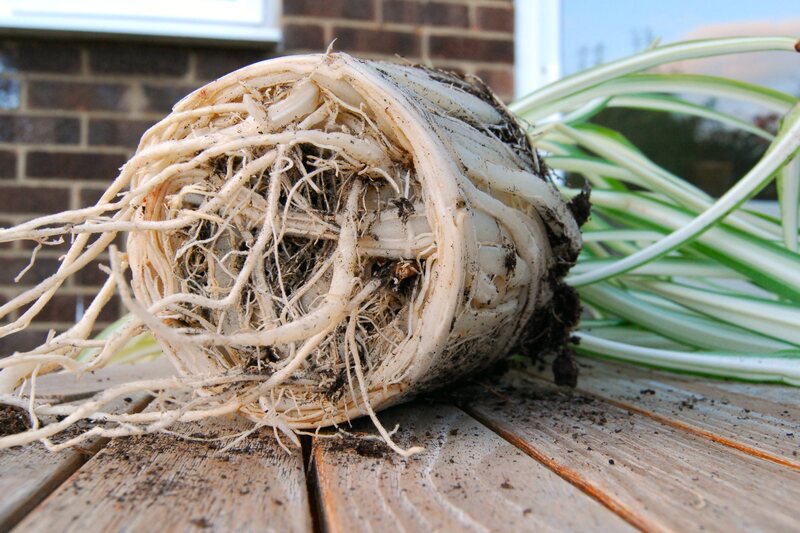Hedge Trimming Techniques for Aesthetic Excellence
Posted on 14/06/2025
Hedge Trimming Techniques for Aesthetic Excellence
When it comes to creating a stunning landscape, hedge trimming techniques play a pivotal role in transforming ordinary greenery into a living masterpiece. Perfectly manicured hedges define boundaries, add privacy, and serve as elegant landscape features. In this comprehensive article, we delve into expert methods for hedge shaping, recommended tools, and maintenance secrets that elevate the beauty and health of your hedges.
The Importance of Professional Hedge Trimming
Why should you master hedge trimming techniques? A well-maintained hedge does more than add curb appeal; it's an expression of artistry in landscaping. Overgrown or uneven hedges can quickly make even the most beautiful gardens appear neglected. Whether you are a homeowner or a gardening enthusiast, learning the right techniques for hedge cutting is essential for:
- Promoting healthy growth and longevity of plants
- Controlling the shape and size for desired aesthetics
- Ensuring dense foliage and minimizing gaps
- Increasing privacy and noise reduction
- Deterring pests and diseases
Hedges are living sculptures. Their beauty is amplified when shaped and maintained using the proper hedge trimming skills and tools.

Understanding Hedge Types and Their Unique Trimming Needs
Formal vs. Informal Hedges
Hedges are broadly categorized into formal and informal types:
- Formal Hedges
These are tightly trimmed, geometric, and symmetrical, often found in urban and classical garden settings (think boxwood, privet, or yew). Techniques for shaping formal hedges require precision and regular trimming for crisp, clean lines. - Informal Hedges
These feature a looser, natural growth pattern and typically consist of flowering or mixed shrubs. Trimming techniques for informal hedges focus on maintaining their natural shape and encouraging blooming.
Popular Hedge Plant Varieties
The best hedge trimming practice often depends on the specific plant species. Commonly used shrubs include:
- Boxwood (Buxus sempervirens)
- Privet (Ligustrum spp.)
- Yew (Taxus baccata)
- Laurel (Prunus laurocerasus)
- Holly (Ilex aquifolium)
- Hornbeam (Carpinus betulus)
- Beech (Fagus sylvatica)
- Photinia (Photinia x fraseri)
Each species responds to trimming differently, emphasizing the need for hedge specific pruning techniques and timing.
Essential Hedge Trimming Tools for Best Results
For aesthetic hedge shaping, start with the appropriate tools:
- Hand Shears - Ideal for precision work, shaping, and light trimming.
- Hedge Trimmers (manual, electric, or gasoline-powered) - Used for larger sections and formal lines.
- Pruning Loppers - Best for cutting thicker branches or stems.
- Secateurs - Handy for spot pruning or detailed work.
- String Lines and Stakes - Essential for creating perfectly straight or level hedge tops.
- Protective Gear - Gloves, safety goggles, and ear protection (especially for powered tools).
Well-maintained, sharp tools are crucial for clean cuts, which reduce plant stress and the risk of disease.
Hedge Trimming Techniques for Aesthetic Excellence
1. Planning and Preparing Your Hedge
Before your first cut, envision the ideal shape. Use stakes and string as guides for level or curved lines. Remove debris and inspect plants for dead or diseased wood, pruning these out first.
2. Establishing the Ideal Hedge Shape
The classic aesthetic technique for trimmed hedges is the "trapezoidal" or tapered profile:
- The hedge base is slightly wider than the top, allowing sunlight to reach lower branches and ensure dense, uniform growth.
- Avoid trimming hedges with vertical or outward-sloping sides as it can lead to thinning and bare spots at the bottom.
Pro tip: For formal hedges, regularly check your work from different angles and distances to maintain symmetry and sharpness.
3. Strategic Cutting for Density and Growth
When aiming for lush aesthetic perfection, employ the following hedge cutting strategies:
- Pinching and tip pruning - Regularly snip off new growth to stimulate branching and density.
- Gradual shaping - For young hedges, shape incrementally instead of cutting to the final size at once. This builds a strong, dense structure over time.
- Thinning cuts - Remove select interior branches to boost air circulation, diminish disease risk, and encourage inner growth.
- Cut just above buds - Always make cuts a fraction above a healthy bud facing outward to direct new growth and prevent dieback.
4. Seasonal Timing: When to Trim Hedges
Respecting the growth cycle of your hedge is critical for health and aesthetic mastery:
- Evergreen formal hedges like boxwood, yew, and privet: Best trimmed in late spring or early summer when active growth begins; light touches can be done through mid-summer.
- Flowering hedges: Trim right after blooming to avoid sacrificing next season's flowers. For spring bloomers, prune immediately after their display finishes.
- Deciduous hedges (beech, hornbeam): Trim in late spring after leaves emerge, and again in late summer for refinement.
- Avoid major trimming late in the season (especially in temperate climates) as new growth may not harden off before winter.
Regular but gentle maintenance is more effective than hacking back overgrown hedges infrequently.
5. Achieving Crisp Lines and Curves
Symmetry and accuracy define artistry in hedge trimming:
- Use taut string lines for level tops and straight sides.
- For rounded or arched forms, use flexible hoses or garden hoses as guides.
- Step back frequently and examine from a distance.
- In complex geometric designs (spirals, domes), light pencil marks on stakes can assist as visual cues.
Don't rush: Precision is key for topiary or formal parterre designs. Work methodically, and refine over several sessions if needed.
6. Advanced Hedge Design Techniques
Ready to take your garden to the next level? Explore artistic shrub shaping methods:
- Cloud pruning - Create undulating, cloud-like forms for a sophisticated Japanese aesthetic.
- Topiary - Sculpt hedges into animal shapes, spirals, and other ornamental forms with repeated, precise trims.
- Layering - Stagger hedge heights for multi-level visual interest.
- Mosaic planting - Interplant different colored or textured shrubs for living tapestries.
- Archways and tunnels - Train tall hedges over supports for dramatic entrances.
These techniques require patience and regular care, but the result is a truly exceptional landscape.
Tips for Maintaining Hedge Health and Beauty
Consistent and mindful maintenance is vital for sustaining aesthetic vibrancy:
- Water during dry spells--especially after heavy trims.
- Apply a balanced, slow-release fertilizer in early spring.
- Mulch around the base to retain moisture and suppress weeds.
- Inspect regularly for pests and diseases such as box blight, aphids, or fungal leaf spots.
- Rejuvenate older hedges by selectively removing some of the oldest branches to encourage young, vibrant growth.
- Clean and disinfect tools to prevent the spread of diseases.
Common Hedge Trimming Mistakes to Avoid
Even experienced gardeners can slip into these errors:
- Over-trimming or scalping - Removing too much foliage at once stresses the plant and can expose bare wood, impeding regrowth.
- Ignoring the hedge's natural form - Forcing a shape unsuited to the plant species may lead to poor health.
- Cutting during active growth spurts or flowering - This can reduce blooms and impact the plant's energy reserves.
- Neglecting lower sections - Hedges often become top-heavy; always trim so the base gets enough sunlight.
- Using blunt or dirty tools - This creates ragged cuts that invite disease.
Patience, regular observation, and technique refinement will yield the best results.

Expert FAQs - Perfect Your Hedge Trimming Approach
- How often should I trim my hedge?
Formal hedges may require trimming 2-3 times per year, depending on growth rates; informal hedges often only once (immediately post-flowering). Quick-growing species may need monthly attention in the peak season. - What's the best time of day to trim hedges?
Early morning or late afternoon is ideal--avoid hot midday sun, which stresses freshly cut foliage. - Can overgrown hedges be restored?
Yes! Restoration pruning may take several years and involves gradually reducing size and encouraging new shoots. - How high should I keep my hedge?
It depends on purpose (privacy, windbreak, decorative) and species, but always consider access for maintenance. Most residential hedges are kept between 1m and 2m (3-6 feet). - Do I need to clean up clippings?
Absolutely--clippings left on the hedge attract disease and pests. Rake and compost or dispose of them properly.
Conclusion: Mastering Hedge Trimming for Aesthetic Excellence
Hedge trimming is both a science and an art. By applying these professional hedge shaping methods, you transform simple plants into vibrant, sculptural features. Remember, aesthetic excellence is the result of careful planning, consistent maintenance, and creative imagination. Whether you favor crisp geometric lines or flowing natural forms, develop your own rhythm and vision--your garden will be a stunning testament to your skill and care.
With this comprehensive guide to hedge trimming techniques, you're now equipped to achieve a landscape that radiates both beauty and health, year after year.

